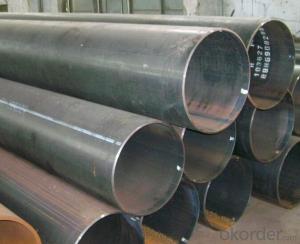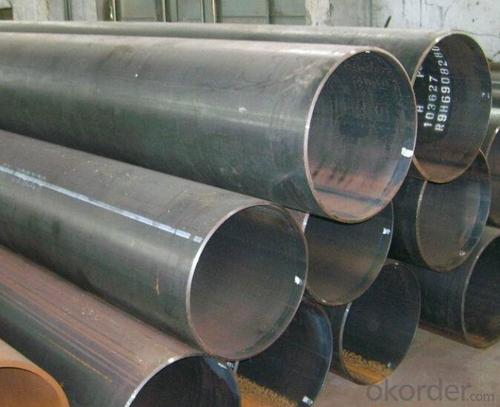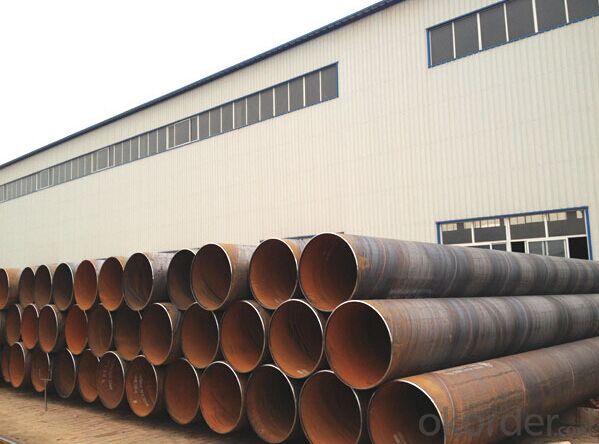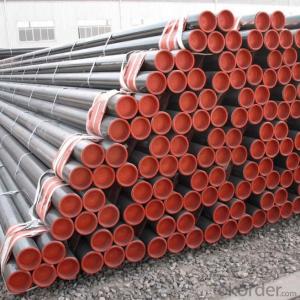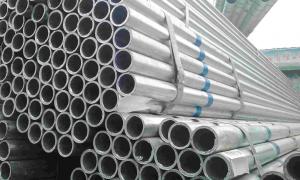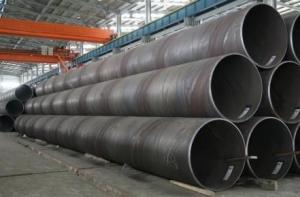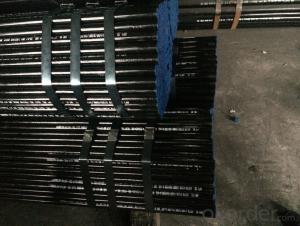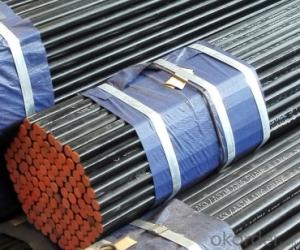API 5L ASTM A53 A106 GR.B LSAW WELDED PIPE BLACK CARBON STEEL TUBE
- Loading Port:
- China Main Port
- Payment Terms:
- TT or LC
- Min Order Qty:
- -
- Supply Capability:
- -
OKorder Service Pledge
OKorder Financial Service
You Might Also Like
Product Description:
1、Structure of API 5L ASTM A53 A106 GR.B LSAW WELDED PIPE BLACK CARBON STEEL TUBE Description:
API 5L ASTM A53 A106 GR.B LSAW WELDED PIPE BLACK CARBON STEEL TUBE is formed by drawing a solid billet over a piercing rod to create the hollow shell. As the manufacturing process does not include any welding, seamless pipes are perceived to be stronger and more reliable. Historically seamless pipe was regarded as withstanding pressure better than other types, and was often more easily available than welded pipe.
2、Main Features of the API 5L ASTM A53 A106 GR.B LSAW WELDED PIPE BLACK CARBON STEEL TUBE
• High manufacturing accuracy
• High strength
• Small inertia resistance
• Strong heat dissipation ability
• Good visual effect
• Reasonable price
3、 API 5L ASTM A53 A106 GR.B LSAW WELDED PIPE BLACK CARBON STEEL TUBE Images:
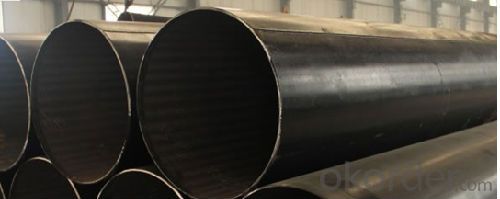
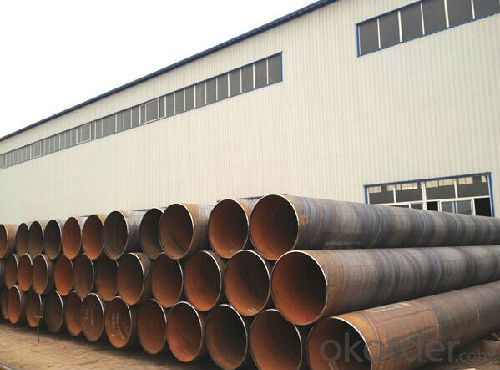
- Q: Does seamless steel tube have a bend of 135 degrees?
- In engineering, it is usually marked as "45 elbow" and has no "135" mark. The angle of the elbow is acute, so there will be no more than 90 degrees elbow.Elbow is a common connecting pipe used in plumbing and heating. It is used for the connection of the bend of pipe, and is used to change the direction of pipe.
- Q: What are the common methods for repairing steel pipes?
- Some common methods for repairing steel pipes include welding, pipe wrapping, pipe relining, and pipe bursting.
- Q: What is the difference between steel pipe and HDPE pipe?
- Steel pipe and HDPE pipe have different compositions and characteristics, making them suitable for various applications. Steel pipe, made of steel, is a robust and durable material commonly used in industrial and infrastructure projects that require strength and reliability. It can withstand high pressure, temperature, and heavy loads, and is resistant to corrosion for both above-ground and underground installations. On the other hand, HDPE pipe is composed of high-density polyethylene, a plastic polymer. These pipes are lightweight, flexible, and easy to install, making them ideal for water supply, drainage systems, and agricultural irrigation. They are resistant to chemicals, abrasion, and UV rays, making them suitable for indoor and outdoor use. HDPE pipes also have a long service life and require low maintenance. In terms of cost, steel pipes are generally more expensive due to the raw materials and manufacturing process involved. However, they are chosen for their superior strength and durability in applications with high pressure or extreme conditions. HDPE pipes offer a cost-effective solution for applications that don't require the same level of strength and durability. In summary, the differences between steel pipe and HDPE pipe lie in their composition, strength, durability, and cost. Steel pipe is known for its strength and reliability, while HDPE pipe offers flexibility, easy installation, and resistance to chemicals and UV rays. The choice between the two depends on the specific application and project requirements.
- Q: What is ND steel pipe?
- ND steel also has the ability to resist chloride ion corrosion. ND steel pipe, the main reference indicators (70 degrees Celsius, 50%H2SO4 solution immersion 24 hours), and carbon steel, Japan imported similar steel, stainless steel corrosion resistance compared to higher than these steel grades. Products by domestic refineries and manufacturing units after the use of widely acclaimed, and achieved good results.
- Q: How are steel pipes used in the chemical industry?
- Steel pipes are extensively used in the chemical industry for various applications, including transportation of chemicals, gases, and liquids. They are highly durable, corrosion-resistant, and can withstand high pressure and temperature conditions. Steel pipes are used in chemical plants for the transfer of raw materials, intermediate products, and final products within the production process. They are also employed for the distribution of utilities such as water, steam, and compressed air. Additionally, steel pipes are utilized for the construction of storage tanks, reactors, and other equipment in the chemical industry due to their strength and reliability.
- Q: How are steel pipes stored and transported?
- Steel pipes are typically stored in warehouses or open yards, stacked in an organized manner to prevent damage. They are often transported using trucks or railcars, secured with straps or clamps to ensure stability. For long-distance transportation, pipes may be bundled together or loaded onto flatbed trailers. Additionally, protective coatings are applied to prevent corrosion during storage and transportation.
- Q: Steel pipe is particularly long, how to clean the inner wall of the pipe so that it can be thoroughly cleaned
- If the pipe is relatively long, you have water, you can buy ultrasonic vibration plate into the water for ultrasonic cleaning, if not too long with an ultrasonic vibration rod, inserted into the pipe cleaning, and then rinse with water by ultrasonic stripping of dirt, give you recommend a factory in Jining Hengda
- Q: How do you measure the diameter of a steel pipe?
- To measure the diameter of a steel pipe, you can use a few different methods depending on the available tools and accuracy required. Here are a few common ways to measure the diameter: 1. Calipers: The most accurate method is to use a set of calipers. Open the calipers to their maximum width and then gently close them around the pipe until they fit snugly. The measurement shown on the calipers will be the diameter of the pipe. 2. Tape measure or ruler: If you don't have calipers, you can use a tape measure or ruler. Wrap the tape measure or ruler around the circumference of the pipe, making sure it is snug but not too tight. Divide the measurement by pi (3.14) to get the diameter. This method may not be as accurate as calipers, but it can give you a rough estimate. 3. String or flexible tape: Another option is to use a piece of string or flexible tape. Wrap the string or tape around the circumference of the pipe and mark where it overlaps. Measure the length of the marked section using a ruler or tape measure. Divide this measurement by pi (3.14) to determine the diameter. 4. Pipe gauge: A pipe gauge is a specialized tool designed specifically for measuring pipe diameter. It consists of a series of circular holes with corresponding diameter labels. Simply insert the pipe into the hole that best fits, and the label will indicate the diameter. Remember, it is essential to measure the diameter at multiple points along the pipe to account for any irregularities or inconsistencies. For accurate measurements, it is recommended to take multiple readings and calculate an average diameter.
- Q: Can steel pipes be used for underground water wells?
- Yes, steel pipes can be used for underground water wells. Steel pipes are commonly used for drilling water wells due to their durability, strength, and resistance to corrosion. However, it is important to ensure that the steel pipes are properly coated and protected to prevent any contamination of the underground water source.
- Q: Can steel pipes be used for steam systems?
- Yes, steel pipes can be used for steam systems. Steel pipes are commonly used in steam systems due to their high strength, durability, and heat resistance properties. Additionally, steel pipes can withstand high pressures and temperatures, making them suitable for transporting steam safely and efficiently.
Send your message to us
API 5L ASTM A53 A106 GR.B LSAW WELDED PIPE BLACK CARBON STEEL TUBE
- Loading Port:
- China Main Port
- Payment Terms:
- TT or LC
- Min Order Qty:
- -
- Supply Capability:
- -
OKorder Service Pledge
OKorder Financial Service
Similar products
Hot products
Hot Searches
Related keywords
